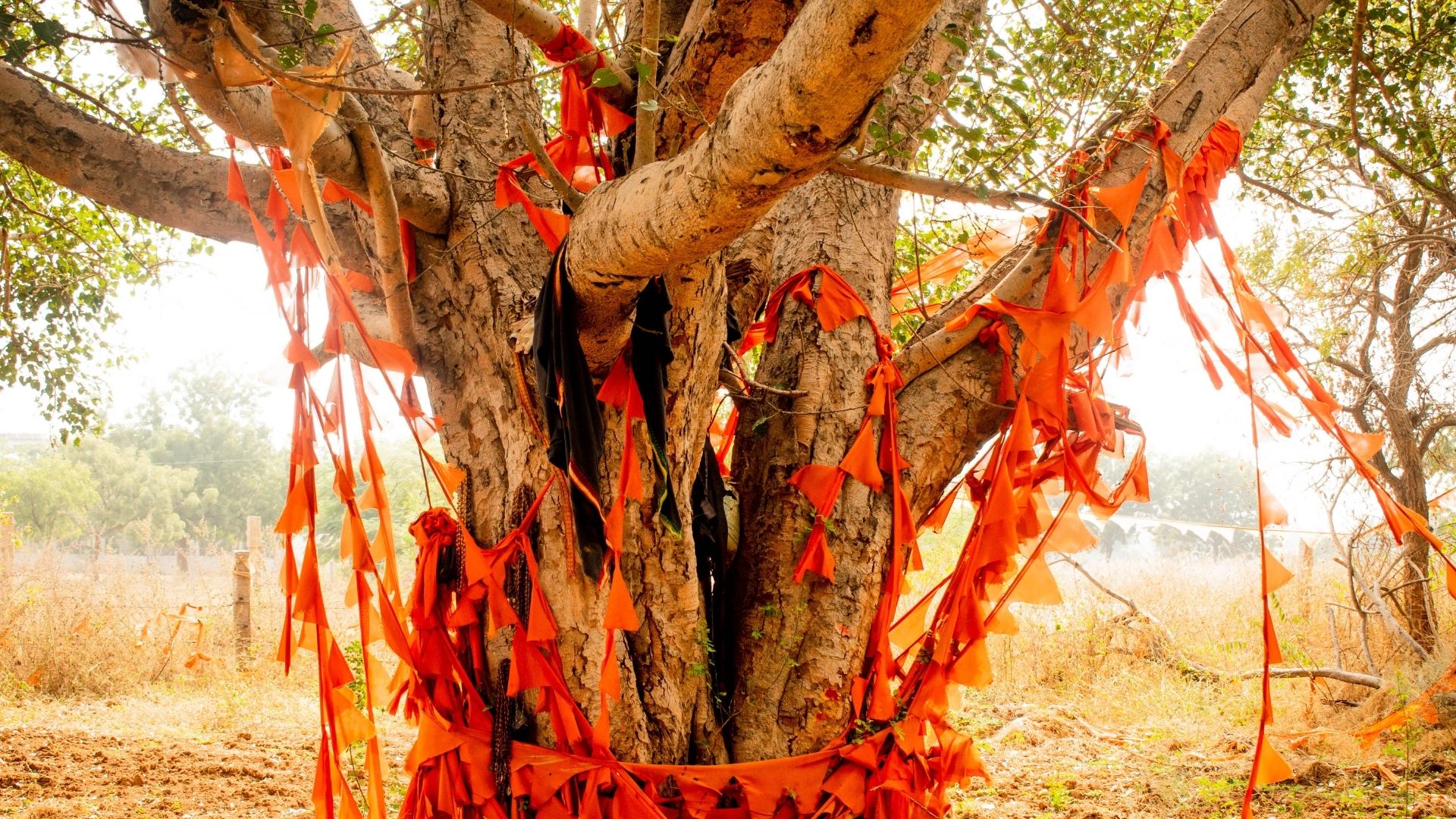Hinduism is one such religion that has spread roots with diverse concerns and through a myriad of disciplines. The Hindu Gods and Goddesses are coupled with nature, animals, rivers, trees, plants, grains, fruits, flowers and so on, and are worshipped together. In India, there is no Hindu shrine without a peepal tree (Ashwatha) on its premises and no Hindu home without a basil plant (Tulsi) on its enclosure or porch.
Ancient scriptures consider numerous herbs, plants and trees sacred and highly significant in daily life. The tradition of worshipping these plants and trees originated in ancient times and is an integral part of Hindu culture. Old cave paintings, seals of the Harappan civilization and various masonry works throughout India stand evident, depicting the worship of trees.
All four Vedas of Hinduism mention and praise the importance of numerous plants and trees. Vedas laid down the ritual procedures for purification before using it for different purposes; identify sacred plants and certain herbs and flowers used for offering or worshipping gods, preparing perfumes, beauty care needs and usage in traditional medicine.
In Hinduism, a particular sacred tree has been assigned for four different Yugas (epochs in geological time scale) by the shastras; Sandalwood for Krita Yuga, Champa for Treta Yuga, Indian Cadaba for Dwapara Yuga, Jackfruit tree for Kali Yuga. In the great epics of Ramayana and Mahabharata, numerous Puranas cite the consideration of several sacred plants and trees for worship, such as Tulsi (Basil), Ashwatha (Peepal), Amla (Indian Gooseberry), Vatavriksha (Banyan), Shamivriksha (Sicklebush), Kalpavriksha (Coconut), Bilva (Bengal Quince) and many others. Additionally, Vedic scriptures and Puranas explain that certain trees are dwelling of Devas (Gods), Yakshas (Semi-Gods) and Rakshasas (Demons), and they are the guardians of nature and shall be treated with due respect and devotion.
Since the tradition and culture of Buddhism and Jainism are similar to that of Hinduism, plants and trees also play a vital role in these religions. Several plants and trees are retained sacred and linked to each form of Buddha and Jaina Tirthankaras. The people of rural India continue to believe in the existence of spirits in the trees; thus, they perform rituals and offerings to seek grants and wishes. Native communities still do due diligence in protecting sacred groves and their traditions. Many traditional medical practitioners follow conventional ritualistic procedures observing the worship of various plants and trees used for treating and preparing medicine.
Each tree, plant and herb is associated with one or the other spiritual entities of higher dimensions, zodiac signs, asterisms, tantras, and rituals. They are glorified in various ways in the routine life of Hindus, Jains and Buddhists.









